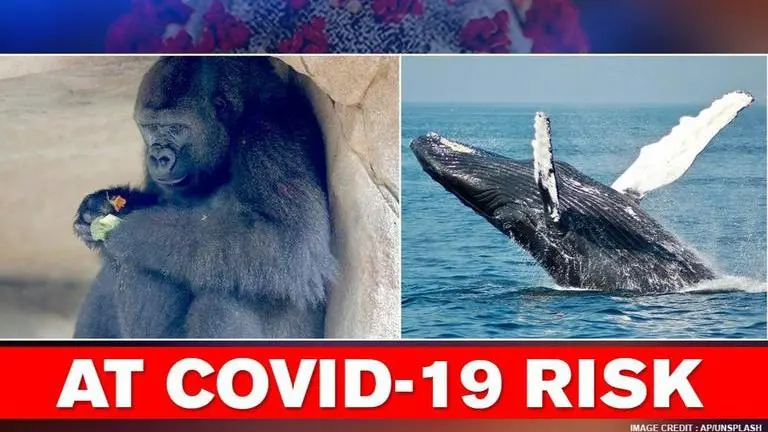Updated 24 August 2020 at 12:30 IST
Study: Not just humans, many animal species also at high COVID-19 risk
A new study has found that coronavirus is not just a potential threat to humans, but also to a number of animal species. The study was published on August 21.
- World News
- 3 min read

As the world grapples with the ongoing COVID-19 pandemic, even the slightest of new information about the virus can bring a fresh supply of stress and anxiety. And now a new study has found that the deadly disease is not just a potential threat to humans, but also to a number of animal species. The new study states that endangered species are predicted to be at COVID-19 risk.
The study was published on August 21 in the journal ‘Proceedings of the National Academy of Sciences’. According to the new study from the University of California, Davis, various endangered primates like Western lowland gorilla, Sumatran orangutan, and Northern white-cheeked gibbon may be at high risk of contracting the infection. Gray whales, bottlenose dolphins and Chinese hamsters are also equally vulnerable to the deadly virus, which has caused havoc worldwide.
While dogs, horses and pigs were found to be at low risk of contracting the infection, domestic animals including cats, cattle and sheep were found to be at medium risk. An international team of scientists used genomic analysis to compare the main cellular receptor for the novel coronavirus in humans called angiotensin converting enzyme-2 or ACE2.
Advertisement
How the scientists carried out the research
The scientists used this in 410 different species of vertebrates including birds, fishes, reptiles, mammals and amphibians. The enzyme is normally found on several different types of tissues and cells, including epithelial cells in the nose, mouth and lungs. In human beings, 25 amino acids of the ACE2 are vital for the virus to bind and gain entry into the cells.
Advertisement
The team of researchers used these 25 amino acids of the ACE2 protein and modeling of its predicted protein structure together with the SARS-CoV-2 spike protein to understand and assess how many of these acids are found in the ACE2 protein of different species. First author for the paper and postdoctoral research associate at UC Davis, Joana Damas reportedly said that animal species with all 25 amino acid residues matching the human protein are found to be at the highest risk for contracting coronavirus via ACE2.
She reportedly added that the risk is expected to reduce if the species’ ACE2 binding residues differ from humans. According to the research, the immediate ancestor of SARS-CoV-2 possibly originated in a species of bat. Bats were discovered to be at very low risk of contracting the virus via their ACE2 receptor.
It is not known yet whether bats directly transmitted the virus to humans or whether it went through an intermediate host. However, the study backs the fact that one or more intermediate hosts were involved. Lead author for the study, Harris Lewin reportedly said that the data provides an important starting point for finding threatened animal species at risk of the deadly infection.
(Image credit: AP/Unsplash)
Published By : Nitika Sharma
Published On: 24 August 2020 at 12:30 IST
